
Centipede is a 1981 fixed shooter arcade video game developed and published by Atari, Inc. Designed by Dona Bailey and Ed Logg, it was one of the most commercially successful games from the golden age of arcade video games and one of the first with a significant female player base. The primary objective is to shoot all the segments of a centipede that winds down the playing field. An arcade sequel, Millipede, followed in 1982.

Miner 2049er is a platform game game developed by Big Five Software and published in December 1982. It is set in a mine, where the player controls the Mountie Bounty Bob. The player controls Bounty Bob through multiple levels of a mine, with the goal of traversing all of the platforms in each level all while avoiding enemies and within a set amount of time.

Star Trek is a text-based strategy video game based on the Star Trek television series (1966–69) and originally released in 1971. In the game, the player commands the USS Enterprise on a mission to hunt down and destroy an invading fleet of Klingon warships. The player travels through the 64 quadrants of the galaxy to attack enemy ships with phasers and photon torpedoes in turn-based battles and refuel at starbases. The goal is to eliminate all enemies within a random time limit.

Temple of Apshai is a dungeon crawl role-playing video game developed and published by Automated Simulations in 1979. Originating on the TRS-80 and Commodore PET, it was followed by several updated versions for other computers between 1980 and 1986.
Jon Freeman is a game designer and co-founder of software developer Automated Simulations, which was later renamed to Epyx and became a major company during the 8-bit era of home computing. He is married to game programmer Anne Westfall, and they work together as Free Fall Associates. Free Fall is best known for Archon: The Light and the Dark, one of the earliest titles from Electronic Arts.
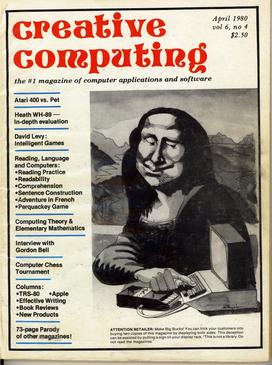
Creative Computing was one of the earliest magazines covering the microcomputer revolution. Published from October 1974 until December 1985, the magazine covered the spectrum of hobbyist/home/personal computing in a more accessible format than the rather technically oriented Byte.
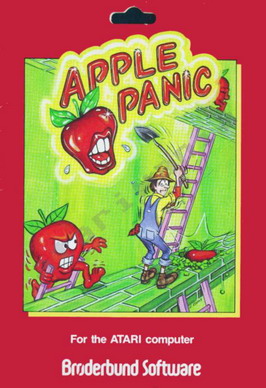
Apple Panic is a game for the Apple II programmed by Ben Serki and published by Broderbund Software in 1981. Apple Panic is an unauthorized version of the 1980 arcade game Space Panic, the first game with ladders and platforms. While the arcade original remained obscure, Apple Panic became a top seller for home computers. It was ported to the Atari 8-bit computers, VIC-20, IBM PC, and TRS-80.
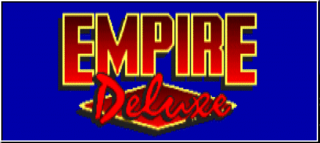
Empire is a 1977 turn-based wargame with simple rules. The game was conceived by Walter Bright starting in 1971, based on various war films and board games, notably Battle of Britain and Risk. The game was ported to many platforms in the 1970s and 1980s. Several commercial versions were also released such as Empire: Wargame of the Century, often adding basic graphics to the originally text-based user interface.
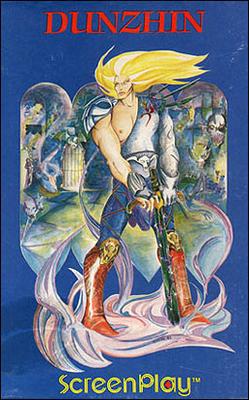
Dunzhin is a fantasy role-playing video game developed by Med Systems Software. It was released on the TRS-80 in 1982, then ported to the Apple II, Atari 8-bit computers, and Commodore 64. An IBM PC port, as a self-booting disk, added digitized speech.
Russ Wetmore is an American programmer and video game designer best known for writing commercial games and applications for Atari 8-bit computers in the early to mid 1980s. His Frogger-inspired Preppie! was published by Adventure International and praised by reviewers for the music and visuals. He also wrote the maze-game sequel, Preppie! II. Wetmore stopped writing games after the video game crash of 1983 and developed the integrated HomePak productivity suite for Batteries Included. He has remained in software development in director and architecture roles.

Sargon II is a sequel to Sargon. Both are computer chess programs for home computers.

Super Nova is clone of Atari, Inc.'s Asteroids arcade game published by Big Five Software for the TRS-80 in 1980. Co-author Bill Hogue called Super Nova "the game that started the company."

Sumer is a 1981 video game published by Crystal Computer for the Apple II, Atari 8-bit computers, Commodore PET, and TRS-80.

Computer Acquire is a 1980 video game published by Avalon Hill for the Apple II, Atari 8-bit computers, Commodore PET, and TRS-80.
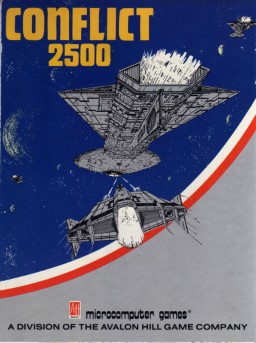
Conflict 2500 is video game published by Avalon Hill in 1981 for the Apple II, Atari 8-bit computers, Commodore PET, and TRS-80.

Chronicles of Osgorth: The Shattered Alliance is a computer wargame published in 1981 by Strategic Simulations for the Apple II and Atari 8-bit computers. Programmed by John Lyon, it relies on a new game engine, called RapidFire, intended to make faster and easier access to wargames published by the studio. During a turn, the program selects the units each in turn and the player only has to order them to move, attack or cast a spell. The order is then executed immediately before the program selects another unit. The game offers two categories of scenarios. The first is composed of medieval-fantasy confrontation, including a free adaptation of the Battle of Gondor against the Mordor forces in the Lord of the Rings. The second is composed of historical battles of antiquity.

Adventure in Time is a text adventure written by Paul Berker for the Apple II. It was published in 1981 by Phoenix Software, followed by a version for Atari 8-bit computers in 1983.
Instant Software was a company that produced game, utility, and education software in the late 1970s and early 1980s primarily for the TRS-80 line of home computers. Instant Software was a subsidiary of Kilobaud Microcomputing, headquartered in Peterborough, New Hampshire and run by Wayne Green.

Threshold is a space-themed fixed shooter written by Warren Schwader and Ken Williams for the Apple II and published by On-Line Systems in 1981. Inspired by Sega's Astro Blaster arcade video game, Threshold introduces many enemy ship types and wave formations as the game progresses. Reviewers found the variety distinguished the game from the many similar shoot 'em ups.
















